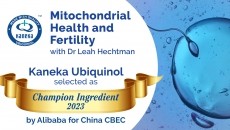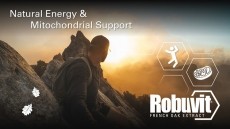Scientists probe tomato's benefits beyond lycopene
also accumulate in significant quantities in key organs, and may
play a role in the health benefits previously attributed to
lycopene, suggests a new study with rats.
By feeding rats a diet containing a tomato powder, researchers from the University of Illinois at Urbana-Champaign report that all three compounds accumulated in the prostate of the animals, research that fills in gaps in our knowledge. "This experiment is the first study to provide new insight into differential tomato carotenoid bio-distributions in a rat model pre-fed with tomato powder," wrote lead author Jessica Campbell in the journal Nutrition Research. The link between the lycopene and prostate cancer risk has been reported in numerous studies, but doubts have been raised about the benefits of the carotenoid after the FDA reported finding no credible evidence supporting lycopene intake and a reduced risk of prostate, lung, colorectal, gastric, breast, ovarian, endometrial, or pancreatic cancer. The FDA has approved a claim on the role of tomatoes in reducing the risk of prostate, gastric, ovarian and pancreatic cancers, indicating that the other compounds found in the whole fruit may be conferring benefits, possibly in synergy with lycopene. The most likely candidates to-date are phytoene (PE) and phytofluene (PF), but research into these compounds is limited, said the researchers behind the new study. "Because of the substantial quantities of PE and PF in tomatoes and research studies supporting the relationship between increased tomato consumption and reduced prostate cancer risk, it is essential to begin evaluating the potential biologic effects of PE and PF, in addition to lycopene," they added. The redress the balance, Campbell and co-workers pre-fed four-week old male Fisher 344 rats an AIN-93G powder diet supplemented with tomato powder (10 per cent). The PE, PF, and lycopene content of the tomato powder were calculated to provide, respectively, 0.015, 0.012, and 0.011 grams per kilograms of diet. After the 30-day feeding programme, liver concentrations of PF (168 nanomoles per gram) were higher than PE or lycopene. On the other hand, lycopene concentrations, then PF, accumulated the most in the prostate. "By using an animal model that has a prostate homologous to that of humans, these novel results may be translatable to conditions in the human prostate," added Campbell. The researchers subsequently fed the tomato-powder-fed animals a single dose of PE or PF (2.7 mg), and found significant increases in the carotenoid concentrations in all the tissues studied, except the adrenal gland. "Results from this work provide a better understanding of relative PE and PF tissue accumulation, compared to lycopene (information not previously known)," wrote Campbell. The researchers outlined the need for future study to continue the evaluation of PE and PF in prostate cancer prevention. These include the synthesis of phytoene and phytofluene in the laboratory that contain radioactive carbon-14 in order to perform tracer studies. "Precise qualitative and quantitative identification of 14C-carotenoid metabolites throughout the body, with an emphasis on the prostate, is essential to evaluate potential mechanisms of actions by which tomato carotenoids may act in prostate cancer prevention," they concluded. A 2001 report in the Journal of Nutrition claimed to be the first to report that phytofluene could be beneficial against prostate cancer (Vol. 131, pp. 3303-3306). Over half a million news cases of prostate cancer are diagnosed every year world wide, and the cancer is the direct cause of over 200,000 deaths. More worryingly, the incidence of the disease is increasing with a rise of 1.7 per cent over 15 years. Source: Nutrition Research (Elsevier) December 2007, Volume 27, Issue 12, Pages 794-801 "Phytoene, phytofluene, and lycopene from tomato powder differentially accumulate in tissues of male Fisher 344 rats" Authors: J.K. Campbell, N.J. Engelmann, M.A. Lila and J.W. Erdman Jr











